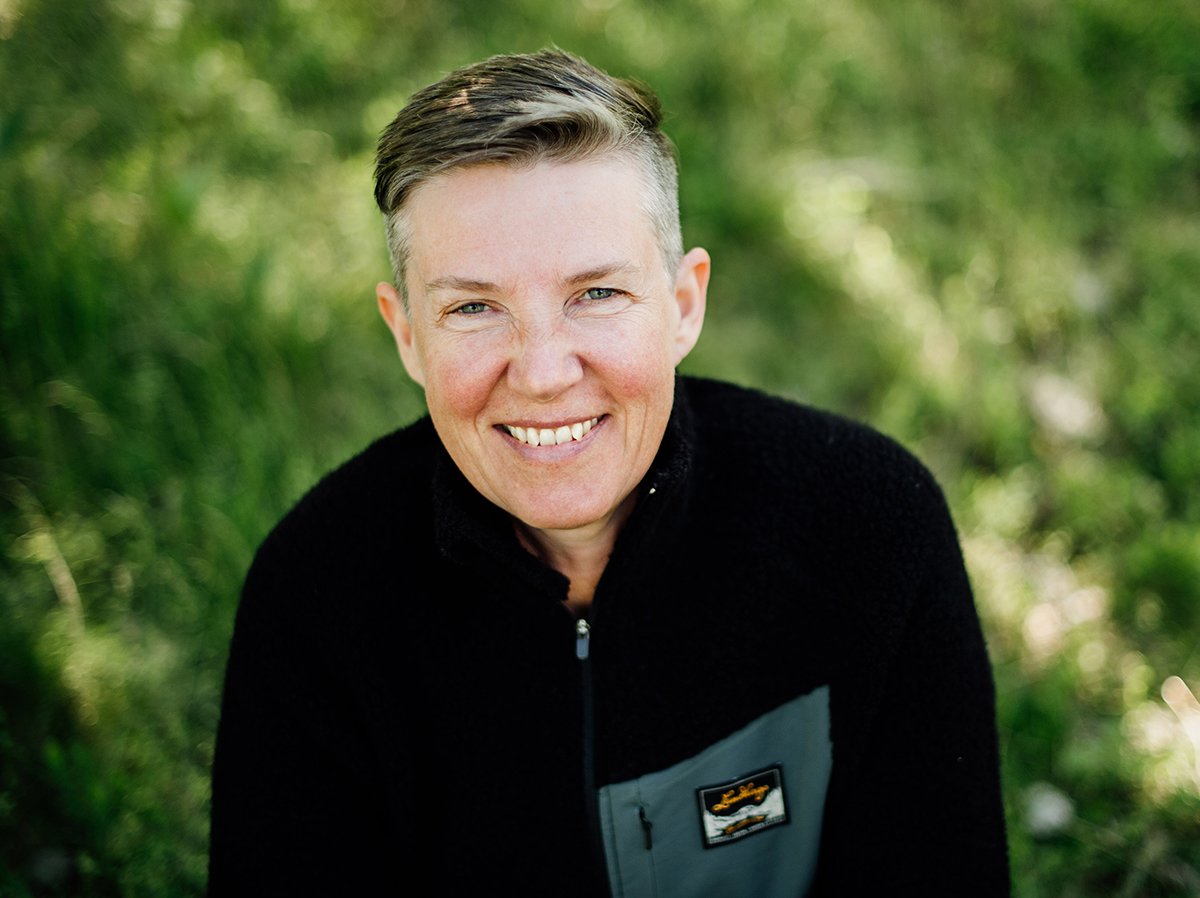"We have a strong commitment"
For the last eight years, Sara Wiksten has been one of the leaders and the expert when it comes to sustainability issues at Lundhags. A fantastically comprehensive and extremely rewarding assignment. She states that environmental thinking is ”deeply rooted”
Interview with Sara Wiksten, product developer manager:
How did your interest in environmental issues and sustainability begin?
– I come from a family of farmers and have been out in the fields or in the forest since I could walk. Growing up this way, with livestock, means that I’ve felt and feel like a part of and constantly present in nature. It’s made me understand what responsibility we have for the environment in a very tangible way regardless of what I’ve worked with.
–I’ve worked in the production of textiles for more than 20 years, both in the outdoor and fashion industries, at many of the major companies. At all of these companies, I have had a key role that has given me the opportunity to influence all choices in all processes.

In what way do Lundhags sustainability ambitions differ from other companies you have worked for?
– I would dare to state that we are unique in many regards. Generally, we have an extremely strong commitment towards environmental issues and conservation. I think that it’s natural for people who are out a lot in nature to want to conserve it. People who come to us and want to work for Lundhags understand us as very environmentally-conscious and at the forefront. We have a genuine history with an intuitive environmental thinking. The shoemaker’s workshop, where it all started in the 1930s, already had the fundamental idea to manufacture boots that could be repaired and last a really long time. It’s deeply rooted, so to say. This thinking, this idea, has developed throughout the years and I think it’s an important part that we actually have a strong environmental identity and genuine knowledge of environmental issues. We’re a small company where everyone is active in all of the big and small decision-making. Our products are manufactured with the idea of sustainability right from the beginning. Almost like the opposite of throwaway.
– It already begins with the everyday things. Everything that’s done during a day, a week, or a year. From office material, travel and coffee, to the purchasing of textiles and how the leather is tanned. The environment is always in focus. It’s automatic at our work. I noticed it right away when I started at Lundhags eight years ago. There was never any doubt if we would be fluorocarbon-free or ensure that our wool is mulesing-free. The company is inspired to do as good as possible all the time. I think that it’s been passed on since 1932.
Is Lundhags heading in the right direction?
– Definitely. I think that we’re at the forefront for many things even if the entire outdoor industry is now trying. For example, all of our products, backpacks, boots and clothing were fluorocarbon-free very early on. Many large suppliers are not there yet. It was and is for us an obvious to minimize our footprint and create a business that does not strain the planet. We also have two full-time employees who verify year-round that the manufacturers follow the guidelines as stated in our comprehensive document regarding, for example, environmental aspects and reasonable working conditions during manufacturing.
In what regards are you absolute best?
– When it concerns sustainability, I would highlight the foundations for Lundhags successes themselves: our boots, which besides the sustainability in miles and time are outstanding. The boots are completely repairable, which means that they last a lifetime if take care of properly. Our shoemaker replaces soles, repairs leather, sets in new eyelets and everything that wears with time.
– Another product that we are extra proud of is the Makke pant, which since its introduction in 2013 has been one of our most popular products. 30,000 new users each year from around the whole world and you can count the number of claims or repairs on two hands – a testament that the pant is truly an innovative and sustainable product. Only top-of-the-line materials have been chosen with regards to sustainability, environmental-friendliness and repairability. Further, it’s manufactured with an extremely energy efficient process and a dyeing process that uses less than one-tenth of the water used by traditional processes. And, you can actually drink the waste water after.
How has the industry changed in recent years?
– Most obvious is that everyone seems to realize how important it is to be carbon-neutral and that careless consumption leads to obvious negative effects. It feels like practically the entire outdoor industry is doing its share and working more commited.
What is the most difficult with sustainability work?
– The most difficult is the cost. Sustainable things cost more to manufacture, materials that are good to the environment are often more epxensive during purchasing. We have to still keep costs down to be commercial and interesting. And then it can be hard to be long-term and consequent. But we have a developed one-year strategy with an entire-year collection and clear focus on carryovers, that our products will survive more than one season.
What is the easiest with sustainability?
– The absolute easiest is actully when we develop and create new products. The whole company breathes sustainability, so it’s an intuitive process: everything is done with the environment and sustainability in mind. Material, production, packaging, everything.
Facts
Name: Sara Wiksten
Does: Head of Sustainability and product manager for clothing and skates at Lundhags.
Close to the heart: ”To create conditions to make Lundhags carbon neutral, while we manufacture equipment that allows people to enjoy nature year-round in all weather.”
Three important things: Environmentally-friendly washing powder, good boots and many tent nights.
Never leave home without: My multitool.
